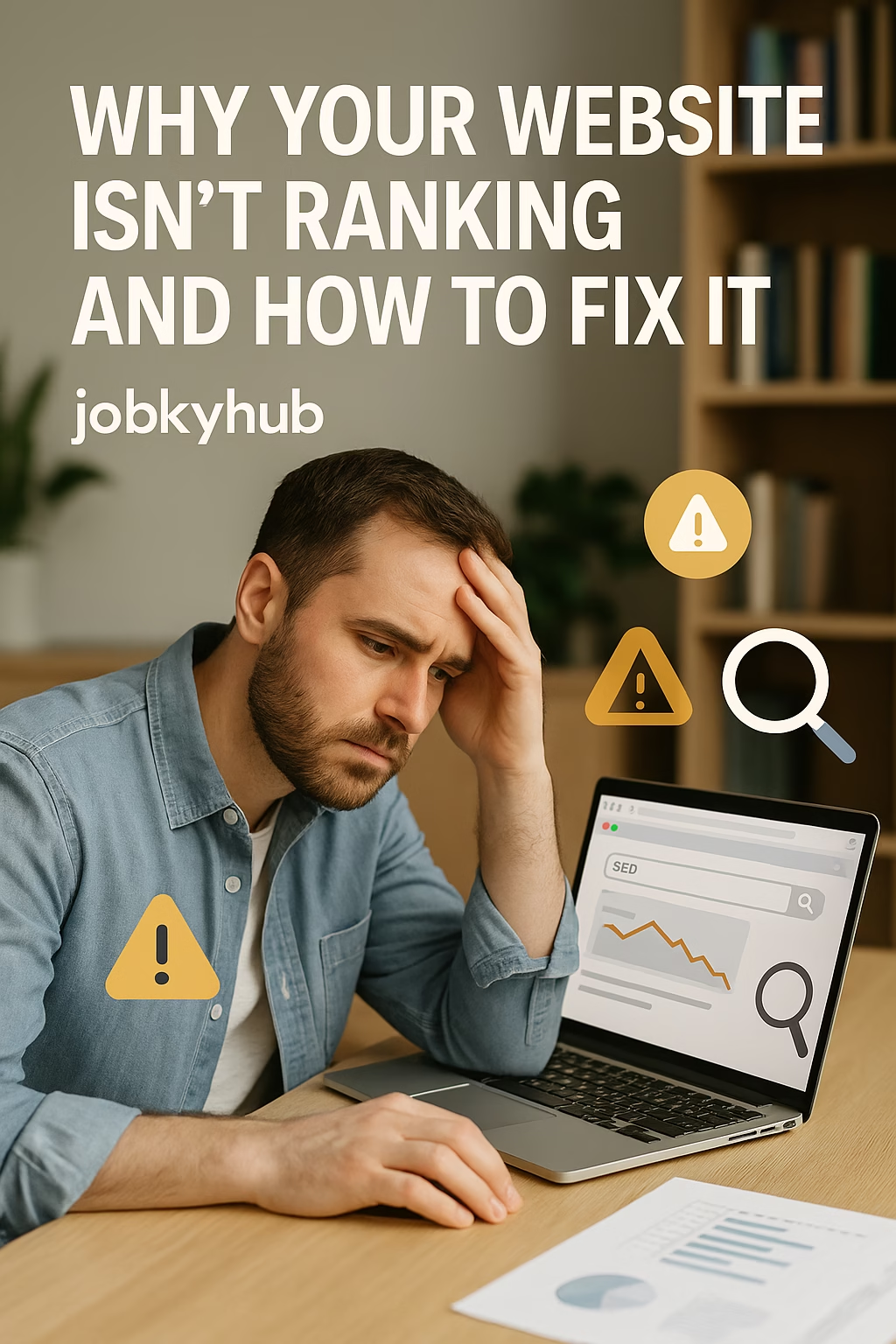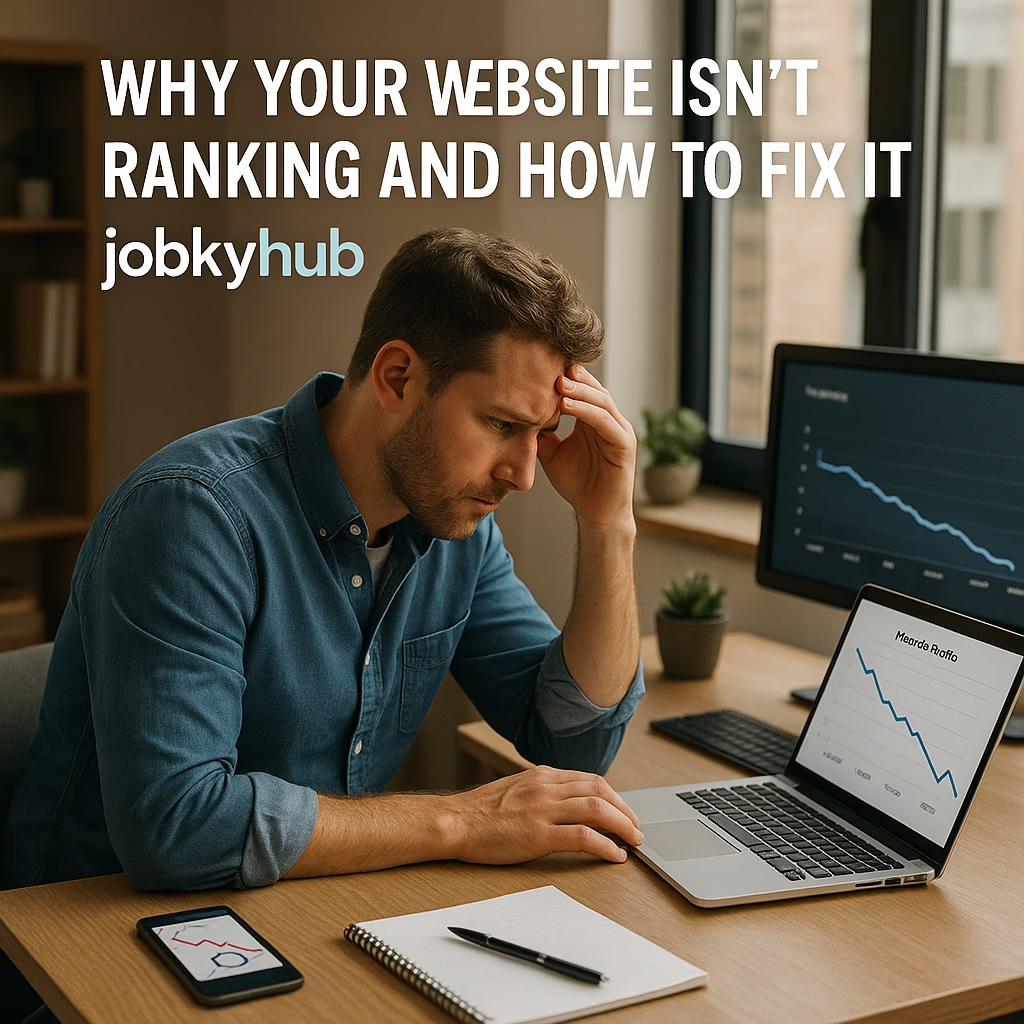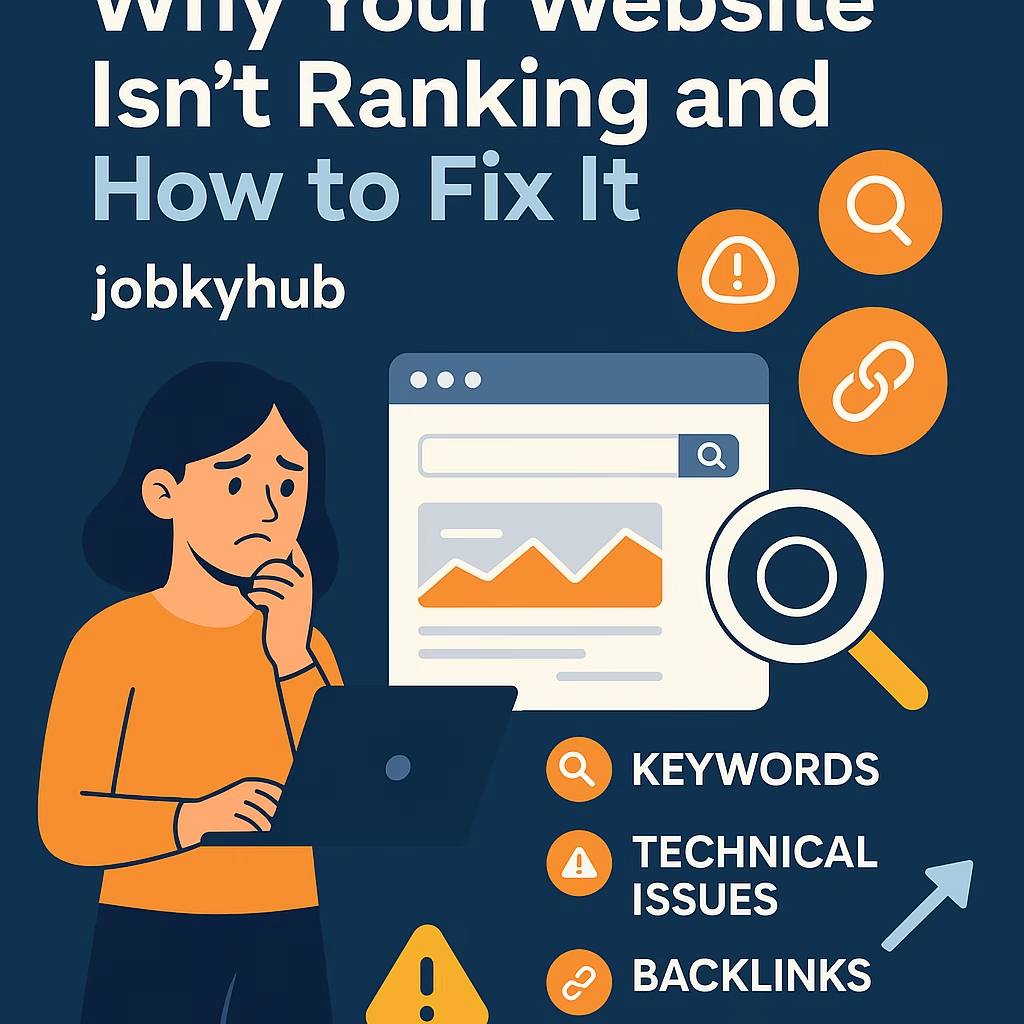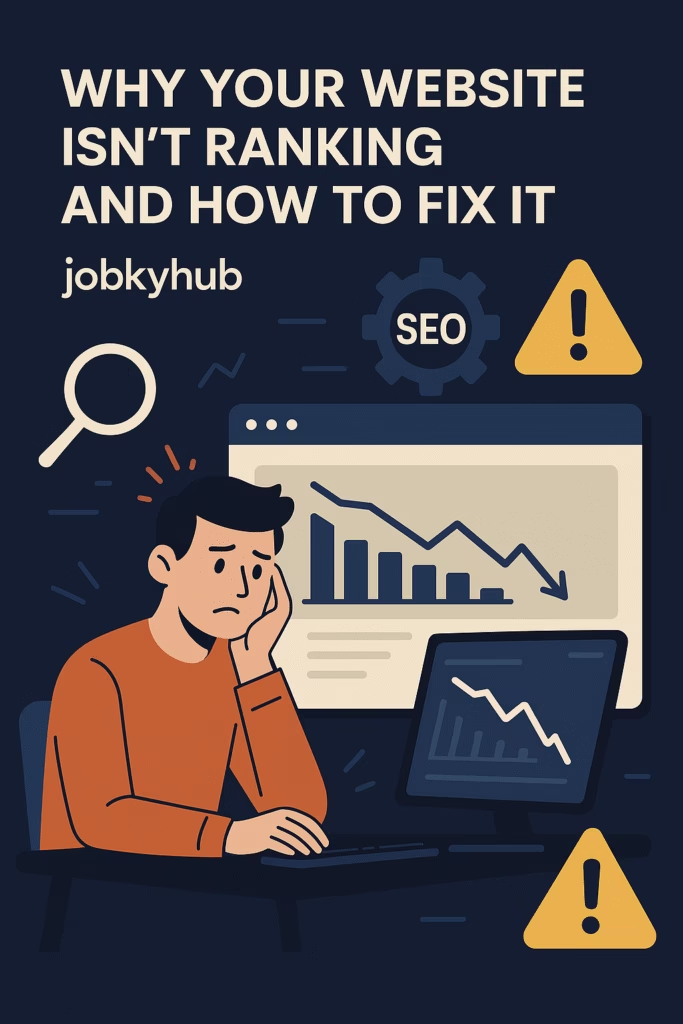
Click Here To More Help Full Article.
Common Reasons for Poor Website Ranking
Understanding the factors that contribute to poor website ranking is essential for any business or individual looking to improve their online presence. One of the foremost causes is inadequate keyword optimization. When a website fails to effectively incorporate relevant keywords, it becomes difficult for search engines to identify the content’s subject matter, making it less likely to appear in search results. Properly researched and strategically placed keywords can significantly enhance visibility.
Another critical factor is the absence of quality content. Search engines prioritize websites that provide valuable, informative, and engaging content to users. Websites filled with low-quality or duplicate content are often penalized. Therefore, investing time and resources into creating unique, high-quality content tailored to the target audience is vital for improving search rankings.
Moreover, mobile responsiveness plays a crucial role in ranking. With an increasing number of users accessing websites via mobile devices, search engines favor sites that are optimized for mobile. A website that does not display well on smartphones or tablets may experience a drop in its ranking due to poor user experience. Ensuring that your website is fully responsive is crucial for maintaining visibility in search engine results.
Additionally, slow page loading times can adversely affect a website’s ranking. Users are less likely to stay on a site that takes too long to load, resulting in increased bounce rates, which can negatively impact rankings. It is essential to optimize images, leverage browser caching, and use efficient coding practices to enhance loading speeds.
Lastly, issues related to backlinks can compromise a website’s credibility. Backlinks from reputable sources signify trust and authority to search engines. However, having spammy or irrelevant backlinks can lead to penalties. Thus, maintaining a healthy backlink profile is crucial for boosting website ranking.

Conducting a Comprehensive SEO Audit
Performing a comprehensive SEO audit is a crucial step in understanding why your website might not be achieving the desired rankings in search engines. A well-structured audit helps identify areas of improvement and potential obstacles that hinder site performance. Start by analyzing your website’s structure; ensure that it is easy for both users and search engine bots to navigate. This includes evaluating your site’s hierarchy, internal linking, and URL structures for clarity and relevance. A clear structural organization not only enhances user experience but also facilitates better crawling by search engines.
Next, assess both on-page and off-page SEO elements. On-page factors include title tags, meta descriptions, header tags, and content quality. Make sure that each page is optimized with relevant keywords, without resorting to keyword stuffing, to maintain readability and engagement. Off-page SEO, on the other hand, focuses on external links and social media presence. High-quality backlinks from reputable sources can significantly improve your site’s authority and ranking; therefore, reviewing your backlink profile is essential.
Technical SEO issues can also impede your site’s performance. Check for common technical problems such as slow loading times, mobile responsiveness, and broken links. Tools like Google Search Console, Ahrefs, or SEMrush can provide valuable insights into these aspects. Additionally, reviewing site analytics will yield performance insights that help gauge user behavior, such as bounce rates and time spent on the site. By pinpointing where visitors tend to drop off, you can identify specific problems to address. Conducting a thorough SEO audit allows you to take proactive measures, addressing any issues that may be preventing your website from ranking effectively.

Effective Strategies to Improve Website Ranking
Improving your website’s ranking on search engines requires a multifaceted approach that incorporates several best practices. One of the primary strategies is optimizing website content with relevant keywords. This entails conducting thorough keyword research to identify terms and phrases that your target audience is actively searching for. Once these keywords are identified, they should be strategically incorporated into your website’s content, including headings, meta descriptions, and image alt texts, without compromising the content’s readability and natural flow.
Another critical aspect to consider is improving site speed. A faster loading time enhances user experience and reduces bounce rates, which are essential factors that search engines consider when ranking pages. Techniques to optimize site speed include compressing images, leveraging browser caching, and minimizing the use of heavy scripts. Implementing these measures can significantly elevate your site’s performance.
Ensuring mobile-friendliness is equally vital, as an increasing number of users access the web via their mobile devices. A responsive design that adapts seamlessly to different screen sizes can help improve user engagement and lower bounce rates. Additionally, Google prioritizes mobile-responsive sites in its ranking algorithms, making this aspect crucial for your overall SEO strategy.
Building high-quality backlinks is also a fundamental strategy for enhancing website authority and visibility. Engaging in guest blogging, participating in industry partnerships, and creating shareable content are effective methods to acquire valuable backlinks. These links serve as endorsements, signaling to search engines that your content is credible and worthy of a higher ranking.
Furthermore, creating engaging content that resonates with your audience is essential. Valuable, informative, and captivating content encourages visitors to spend more time on your site, thereby improving engagement metrics relevant to search engines. Finally, leveraging social media channels can help in amplifying your website’s reach and driving traffic, resulting in improved search rankings over time.

Monitoring Progress and Adapting Your Strategy
To effectively enhance your website’s ranking, it is imperative to monitor progress meticulously after implementing any changes. Tracking various metrics will provide valuable insights into how well your optimizations are performing. Key performance indicators such as organic traffic, bounce rates, and conversion rates play a crucial role in understanding the impact of your SEO strategies.
Organic traffic is the cornerstone metric for assessing your efforts; an increase in visitors arriving at your site via search engines signifies that your changes are potentially successful. Use tools such as Google Analytics to monitor fluctuations in this data over time, allowing you to determine which adjustments are yielding positive results. Furthermore, analyzing bounce rates can reveal whether users are engaging with your content effectively. A high bounce rate may indicate that your content is not aligning with user expectations or that the user experience could be improved.
Conversion rates, another critical metric, measure the effectiveness of your site in converting visitors into customers or leads. By tracking conversions, you can better understand how well your content and call-to-action strategies are resonating with your audience. If conversion rates are not improving, it may signal a need to revise your content strategy or revisit your keywords to ensure you are targeting the right audience.
Moreover, the ever-evolving landscape of SEO requires flexibility in your strategies. Regularly analyzing performance data will not only help you see what is working but also aide in adapting to new trends or search engine algorithm changes. Flexibility allows you to pivot your strategy as necessary, ensuring that your website remains competitive in search rankings. Therefore, embracing a culture of ongoing monitoring and adapting your SEO strategies in response to data insights is essential for sustained success in improving your website’s ranking.
Click Here To More Detail For This Article.






